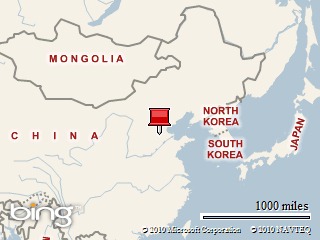Tuesday, Oct. 14, 2008
By Simon Elegant
Arriving. Taxis at Beijing Capital International Airport (PEK) are plentiful; the ride into town costs about $15 to $20 and can take anywhere from half an hour to an hour and a half, depending on traffic. For the adventuresome (or impoverished) there's also a brand new (opened for the Olympics) train that whisks you in 23 minutes to a fairly central station in Beijing from which you can cab it to your hotel.
Getting Around. Aside from cabs, the subway is by far the best way to get around Beijing and also the best way to beat its increasingly gridlocked traffic. At about $.25 to ride anywhere in the city, it's also the best bargain going. All the signs are in Chinese and English, but make sure you have figured out the name of your destination. If you get lost, ask. Beijingers are friendly and willing to help. Hint: The younger the person is the more likely he or she is to speak some English.
There are plenty of biking opportunities and bike lanes left over from the glory days when two-wheelers were kings of the road. But if you decide to bike, consider very seriously buying a helmet. You'll be the only one apart from other foreigners wearing one, but given that 40% of Beijing drivers have had their license for less than three years, it's a bit of a no-brainer (which, of course, is how you might end up without a helmet).
Taxis. Taxis are plentiful, clean and cheap. Be warned however that almost none of the drivers speaks or reads English so make sure you always have a copy of your destination (and hotel or wherever you are returning to) written in Chinese. It's sensible also to have the phone number of someone who speaks English and Chinese in case you get into difficulties.
Tipping. Tipping is so rare that waiters will run out into the street to return the money you must have accidentally left on the table. Speaking of money, bring lots of it or hit the ATMs regularly. Cash is still king in China and credit cards something of a novelty item.
Bargaining. Newer malls and shops have fixed prices, but in places like the Silk Market — a paradise of knock-offs frequented by dopey foreigners — the first asking price is usually about 10 times (yep, you heard that right) or more what merchants will finally settle for. As ever, walking away will bring the price down very rapidly indeed.
Crossing the Street. Look in all four directions when crossing streets and then up, just in case. Like we said, 40% of Beijing drivers have been on the road for less than three years and it really shows.

 Tim Graham / Getty
Tim Graham / Getty Liu Liqun / Corbis
Liu Liqun / Corbis



